Perseverance!
That is how Martha, a single mother in the West Virginia of 1918, survives and ultimately thrives, doing whatever she has to for her daughter, Frances. It is also how Frances, a pregnant newlywed at the outbreak of World War II, gets through those dark days and their aftermath.Spanning five decades and two world wars, Stoking Hope follows mother and daughter from coal patch poverty, to the privileged world of wealthy industrialists, through rationing and uncertainty during World War II, and finally, to the post-war boom on the mid-Atlantic coast. Along the way, readers meet two extraordinary trailblazers, Dr. Kate Waller Barrett, co-founder of the National Florence Crittenton Mission, and pioneering chemist Stephanie Kwolek. This tale of remarkable women, both real and imagined, is full of pain, joy, friends gained and lost ... oh, and the creation of Kevlar.
"…a story that will delight readers who enjoy American history epics strong in psychological growth, revelations, and changing lives. Historical fiction and women's literature libraries will find Stoking Hope an attractive addition."
D. Donovan, Senior Reviewer, Midwest Book Review
The Journey
Digging, discovering and writing Stoking Hope
I learned of Dr. Kate Waller Barrett (1857-1925) nearly twenty years ago when I joined the Board of Crittenton Services in Wheeling, West Virginia. Intrigued, I dug deeper to discover a woman far ahead of her time. She was a physician, social reformer, humanitarian, and leader of the National Florence Crittenton Mission. Why hadn't I heard of Dr. Kate Waller Barrett? She deserved a prominent place in the history books.
Read More/Read Less
When I decided to write Stoking Hope, I started with additional research on Kate, locating two vintage books. Some Practical Suggestions on the Conduct of a Rescue Home, was published as a pamphlet by the National Florence Crittenton Mission in 1903 and is Kate's own words. It was combined with the Life of Dr. Kate Waller Barrett, written in 1933 by Otto Wilson, and reprinted as part of the Women in America, From Colonial Times to the 20th Century series in 1974. Fifty Years Work with Girls was written in 1933 by Otto Wilson in collaboration with Kate's oldest son, Robert S. Barrett. Both books were invaluable to me as I created scenes of her life for Stoking Hope.
Seventy-five miles northeast of Wheeling in the small town of New Kensington, Pennsylvania, stands a historical marker where Stephanie Louise Kwolek's childhood home once stood. Stephanie (1925-2004), a dedicated and pioneering chemist, forged a remarkable career in an industry that offered few opportunities for a woman of her time. A member of the National Inventors Hall of Fame and the Women's Hall of Fame, she was awarded the National Medal of Technology and the Perkin Medal from the Society of Chemical Industry. Her discovery in 1965 led to the creation of Kevlar®. She too, deserved a place in the history books. A slim book, Stopping Bullets with a Thread by Edwin Brit Wyckoff, along with published interviews and media articles, helped bring Stephanie to life.
To tell Kate and Stephanie's stories, I created Martha Kraus and her daughter Frances Hope to tie these two fascinating women together. Here are a few inspirations for their story…
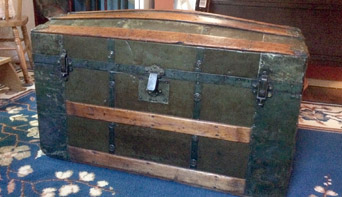 I dug my great grandparents' trunk out of my mother's closet several years ago and dragged it to a furniture refinishing class where I removed layers of paint to reveal the metal and wood underneath. The instructor was a stickler for authenticity, down to the iron nails and leather straps. It took months, and while I scraped and sanded, I thought about the great grandparents that I never knew, wondering how they had the courage to leave everything behind and travel thousands of miles to a strange country, knowing they would never see their families and homeland again.
I dug my great grandparents' trunk out of my mother's closet several years ago and dragged it to a furniture refinishing class where I removed layers of paint to reveal the metal and wood underneath. The instructor was a stickler for authenticity, down to the iron nails and leather straps. It took months, and while I scraped and sanded, I thought about the great grandparents that I never knew, wondering how they had the courage to leave everything behind and travel thousands of miles to a strange country, knowing they would never see their families and homeland again.
 I was lucky enough to spend much time with my grandmother. This is her school photo, taken in 1904. She encouraged me to read, never refusing my request for a Little Golden Book from the Thorofare supermarket. I never met my coal-miner grandfather but heard stories of life in the coal patches where my mother and aunt were raised. To learn more, I visited The Coal and Coke Heritage Center at Penn State where I met with Dr. Evelyn A. Hovanec, who compiled, wrote and edited Common Lives of Uncommon Strength: The Women of the Coal and Coke Era of Southwestern Pennsylvania 1880-1970.
Two other insightful books on coal mining I read are: Cloud by Day, The Story of Coal and Coke and People by Muriel Earley Sheppard, and Coal, A Human History by Barbara Freese.
I also toured the Beckley Exhibition Coal Mine and a working coal mine, the Shoemaker Mine.
I was lucky enough to spend much time with my grandmother. This is her school photo, taken in 1904. She encouraged me to read, never refusing my request for a Little Golden Book from the Thorofare supermarket. I never met my coal-miner grandfather but heard stories of life in the coal patches where my mother and aunt were raised. To learn more, I visited The Coal and Coke Heritage Center at Penn State where I met with Dr. Evelyn A. Hovanec, who compiled, wrote and edited Common Lives of Uncommon Strength: The Women of the Coal and Coke Era of Southwestern Pennsylvania 1880-1970.
Two other insightful books on coal mining I read are: Cloud by Day, The Story of Coal and Coke and People by Muriel Earley Sheppard, and Coal, A Human History by Barbara Freese.
I also toured the Beckley Exhibition Coal Mine and a working coal mine, the Shoemaker Mine.
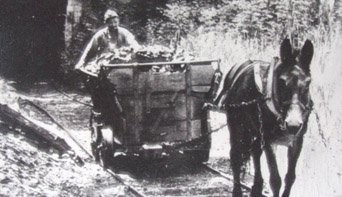 During most of the 19th century, coal was mined by hand with the aid of animals including mules, goats, oxen and even dogs. Animals hauled coal from the working face to the tipple where the coal was loaded for shipment. Today's underground mines are highly mechanized and automated, utilizing continuous miners, coal-loading machines and conveyors. One continuous miner machine can mine more coal in five minutes than a miner of the 1920s would produce in an entire day. My aunt found this photograph when she was clearing out her attic.
During most of the 19th century, coal was mined by hand with the aid of animals including mules, goats, oxen and even dogs. Animals hauled coal from the working face to the tipple where the coal was loaded for shipment. Today's underground mines are highly mechanized and automated, utilizing continuous miners, coal-loading machines and conveyors. One continuous miner machine can mine more coal in five minutes than a miner of the 1920s would produce in an entire day. My aunt found this photograph when she was clearing out her attic.
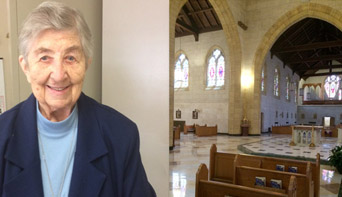 The Sisters of our Lady of Charity arrived in Wheeling in 1900, operating Our Lady of the Valley school for girls until 1970. Sister James came to the monastery and school in 1950 and still lives in an apartment on the ground floor of the historic building, which found new life as a nursing home. This special lady spent hours with me, leading me through the labyrinth of hallways and re-configured rooms as she shared her memories. Seeing the facility through her eyes, I was transported back to the time when the building was full of spirited young girls, and the dedicated sisters who cared for them when they had nowhere else to go. Pictured above is Sister James and the monastery's unique, three-winged chapel.
Articles from the Wheeling Intelligencer in 1900 and the Wheeling News-Register in 1938 and 1960 also provided insight on the sisters and their school.
The Sisters of our Lady of Charity arrived in Wheeling in 1900, operating Our Lady of the Valley school for girls until 1970. Sister James came to the monastery and school in 1950 and still lives in an apartment on the ground floor of the historic building, which found new life as a nursing home. This special lady spent hours with me, leading me through the labyrinth of hallways and re-configured rooms as she shared her memories. Seeing the facility through her eyes, I was transported back to the time when the building was full of spirited young girls, and the dedicated sisters who cared for them when they had nowhere else to go. Pictured above is Sister James and the monastery's unique, three-winged chapel.
Articles from the Wheeling Intelligencer in 1900 and the Wheeling News-Register in 1938 and 1960 also provided insight on the sisters and their school.
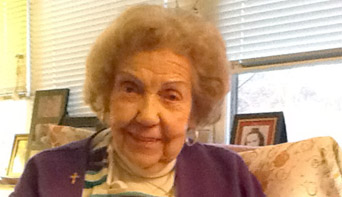 Martha Atwell is a 1941 graduate of the Margaret Morrison Carnegie College at the Carnegie Institute of Technology (now Carnegie Mellon University). The alumni association at the university put me in touch with Martha and she graciously spent a morning with me, sharing college publications, photographs and recollections of her years at Carnegie Tech. My time with Martha shaped the scenes of Frances's college days.
Martha Atwell is a 1941 graduate of the Margaret Morrison Carnegie College at the Carnegie Institute of Technology (now Carnegie Mellon University). The alumni association at the university put me in touch with Martha and she graciously spent a morning with me, sharing college publications, photographs and recollections of her years at Carnegie Tech. My time with Martha shaped the scenes of Frances's college days.
 My father spent four years in the infantry during World War II. He never spoke of his time in the war, and I didn't think about what he experienced until the year before he died and we were celebrating his 71st birthday. When I arrived at the house he was watching a documentary commemorating the 50th anniversary of the Battle of the Bulge and I had an "ah-ha" moment, realizing my father spent his 21st birthday in a frozen foxhole in Europe, thousands of miles from his family and friends. Very different from my 21st birthday, a lively celebration marking the beginning of my senior year of college.
My father spent four years in the infantry during World War II. He never spoke of his time in the war, and I didn't think about what he experienced until the year before he died and we were celebrating his 71st birthday. When I arrived at the house he was watching a documentary commemorating the 50th anniversary of the Battle of the Bulge and I had an "ah-ha" moment, realizing my father spent his 21st birthday in a frozen foxhole in Europe, thousands of miles from his family and friends. Very different from my 21st birthday, a lively celebration marking the beginning of my senior year of college.
My Uncle Bill did talk about his time in World War II. He was a pilot on a B-24 bomber and flew 30 combat missions over Europe (he and his crew are pictured above). A few years before he passed away I recorded some recollections of his training and missions. I treasure that recording.
 World War II also meant changes on the home front. Government-sponsored ads, radio shows, posters and pamphlets urged Americans to support and maintain supply levels for the troops abroad. Items were rationed. Scrap drives and goods donations were encouraged. Women took factory jobs. Not a single person was unaffected by the war. Sugar, coffee, cheese, butter, gasoline, footwear, silk and nylon are just a few of the many items rationed in the United States during the war.
Learning to utilize what they had during rationing time, women were especially creative in the kitchen. This "War Cake" recipe uses no eggs, sugar or butter.
World War II also meant changes on the home front. Government-sponsored ads, radio shows, posters and pamphlets urged Americans to support and maintain supply levels for the troops abroad. Items were rationed. Scrap drives and goods donations were encouraged. Women took factory jobs. Not a single person was unaffected by the war. Sugar, coffee, cheese, butter, gasoline, footwear, silk and nylon are just a few of the many items rationed in the United States during the war.
Learning to utilize what they had during rationing time, women were especially creative in the kitchen. This "War Cake" recipe uses no eggs, sugar or butter.
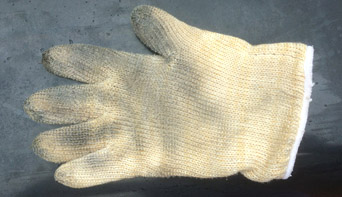 My own Kevlar® oven mitt (obviously well-used) made me think about how times have changed in the kitchen. Today, the kitchen is the centerpiece of the home, replacing the living room as the gathering place for family and friends. But it wasn't always a room where people wanted to spend time. Filled with noises and smells, kitchens were often crowded, uncomfortable and downright dangerous. From wood-burning stoves, to the use of coal then gas, to the introduction of plumbed water and electricity, the kitchen changed considerably throughout the time frame of Stoking Hope.
After reading an early chapter of Stoking Hope one of my critique group members quipped, "how easy it is to take our everyday conveniences for granted." So true. A heartfelt "thank you" to my entire critique group.
My own Kevlar® oven mitt (obviously well-used) made me think about how times have changed in the kitchen. Today, the kitchen is the centerpiece of the home, replacing the living room as the gathering place for family and friends. But it wasn't always a room where people wanted to spend time. Filled with noises and smells, kitchens were often crowded, uncomfortable and downright dangerous. From wood-burning stoves, to the use of coal then gas, to the introduction of plumbed water and electricity, the kitchen changed considerably throughout the time frame of Stoking Hope.
After reading an early chapter of Stoking Hope one of my critique group members quipped, "how easy it is to take our everyday conveniences for granted." So true. A heartfelt "thank you" to my entire critique group.
Events
June 17, 2023: Book Signing at Completely Booked in Murrysville, PA
May 2023: Fun day at the East Union Craft Fair in West Deer Township with fellow author Linda Lee Blakemore
January 2023: Lunch with the Wheeling WV CC Book Club
November 2022: Nominated for the TAZ Book Award
August 2022: A lovely evening with the Uniontown PA book club
April 2022: My first book club visit! Thank you Wheeling WV Book Club.
March 2022: Stoking Hope named A Women's History Month Selection! Watch Video.
January 29, 2022: Interview on WRTF-TV7 with Ashley Kaiser
December 23, 2021: Interview on New Books Network with G.P. Gottlieb
Contact Me
I love book clubs! I would be happy to visit your book club, in person or virtually, to present my research and writing methods, and hear your comments on Stoking Hope. Please contact me at info@CKMcDonough.com